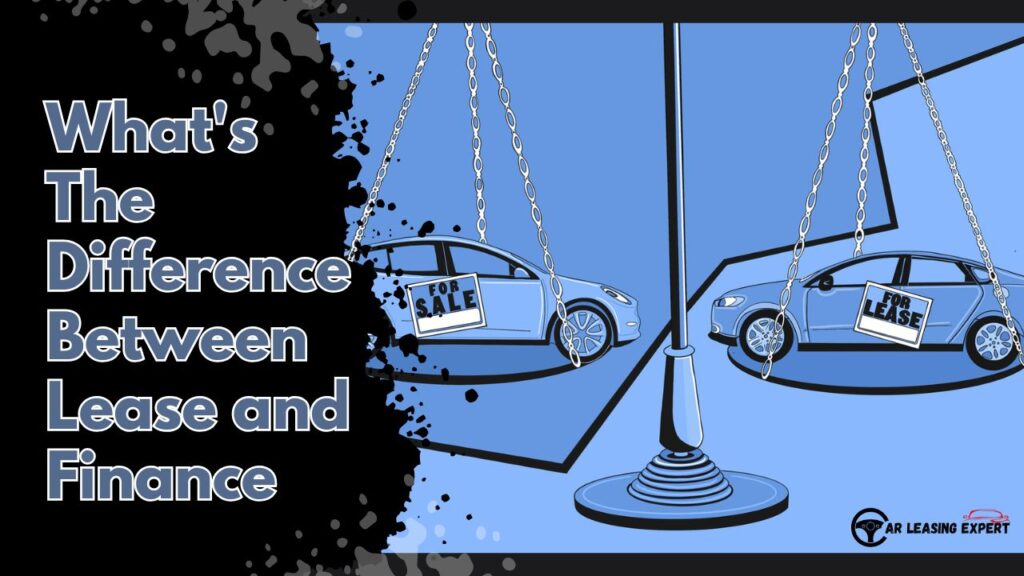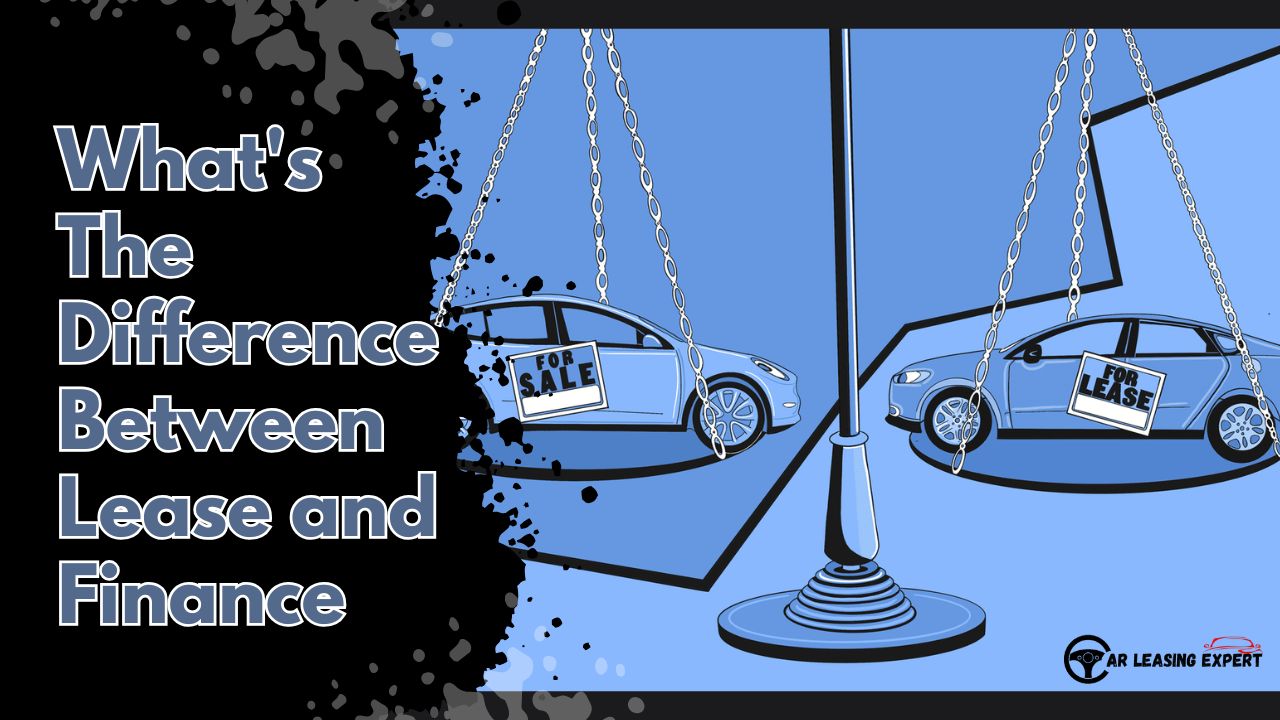Are you thinking about making a major purchase? You’ve probably come across the terms “leasing” and “financing.” But what’s the real difference, and which one is better for your needs? Let’s dive into the nitty-gritty details of leasing vs. financing to help you make an informed decision.
What’s The Difference Between Lease and Finance
When it comes to buying a car, you have two main options: leasing and financing. Both options have their own advantages and disadvantages, and the choice between them depends on your personal preferences, financial situation and driving habits.

What is Leasing?
Leasing is basically a long-term rental agreement. You pay to use the item for a set period, typically two to four years, after which you either return it to the lessor or have the option to purchase it for its residual value. Leasing typically involves lower monthly payments compared to financing, making it an attractive option for those looking to minimize their upfront and ongoing costs.
How Does a Lease Work?
In a lease, you pay monthly fees to use the asset, whether it’s a car, office equipment, or even real estate. Once the lease ends, you either return the car to the dealership or choose to purchase it at a predetermined price.
Features of Leasing
No ownership: When you lease, you don’t own the item. At the end of the lease term, you either return it or buy it.
Lower monthly payments: Lease payments are typically lower than loan payments, since you only pay for the depreciation and use of the item during the lease term.
Mileage limits: For vehicles, leases often have mileage restrictions. Exceeding these limits can result in additional charges.
Maintenance costs: Some leases include maintenance packages, but you may still be liable for excessive wear and tear.
Flexibility: Leasing allows you to upgrade to newer models or technologies more frequently.
Terms in Leasing Agreements
Lease Term: Duration of the lease (e.g., 24 months).
Residual Value: The asset’s value at the end of the lease.
Mileage Limits: Common in vehicle leases, this restricts how much you can drive.
What is Financing?
Financing involves borrowing money to purchase the item outright. You make monthly payments to the lender over an agreed-upon term until the loan is paid off. Once the loan is paid off in full, you own the item outright and can use it without restrictions.
How Does Financing Work?
You take out a loan to purchase the item and pay it back over time, usually with interest. Once you pay it off, it’s yours.
Features of Financing
Ownership: Financing results in ownership of the item after the loan is paid off.
Higher monthly payments: Loan payments are typically higher than lease payments because you’re paying the full value of the item, plus interest.
No usage restrictions: With financing, there are no mileage limits or similar restrictions, giving you more freedom.
Long-term value: Ownership allows you to keep or sell the item once the loan is paid off, potentially allowing you to recoup some of your investment.
Building equity: Each payment builds equity in the item, unlike leasing, where payments only cover usage.
Common Financing Options
Auto Loans
Mortgages
Personal Loans
Differences Between Lease and Finance
| Feature | Leasing | Financing |
|---|---|---|
| Ownership | No ownership | Ownership after loan repayment |
| Monthly Costs | Lower monthly payments | Higher monthly payments |
| Initial Costs | Lower upfront costs | May require a larger down payment |
| Restrictions | Mileage and usage limits | No restrictions |
| Flexibility | Easier to upgrade or change items | Long-term commitment |
When to Choose Leasing?
Lower monthly payments
Leasing typically offers lower monthly payments compared to financing, as you only pay for the depreciation of the car over the lease term.
Driving a new car every few years
If you enjoy driving a new car with the latest features and technologies every few years, leasing allows you to upgrade to a new vehicle at the end of each lease term.
Lower maintenance costs
New cars typically come with warranties that cover maintenance and repairs. Since the terms of the lease typically align with the warranty period, you may incur fewer maintenance expenses.
No long-term commitment
Leasing provides flexibility, as you are not committing to long-term ownership. At the end of the lease, you can return the car and lease a new one, or choose a different option.
Limited annual mileage
Leasing may be suitable if you drive within the annual mileage limits (typically 10,000 to 15,000 miles per year). Exceeding these limits may result in additional charges.
When to Choose Financing
Ownership
If you prefer to own your vehicle and build value over time, financing is the best option. Once you’ve paid off the loan, you own the vehicle outright.
No mileage restrictions
Financing is ideal if you drive a lot and don’t want to worry about mileage limits. There are no restrictions on how many miles you can drive with a financed vehicle.
Customization
Financing allows you to modify or customize your vehicle as you wish, without any restrictions of a lease.
Long-term savings
While monthly payments may be higher with financing, once you’ve paid off the loan, you no longer have to pay for the car, which can lead to long-term savings.
Higher credit score
Financing may be a better option if you have a good credit score, as it can help you get a lower interest rate and more favorable loan terms.
Tax Implications of Leasing vs. Financing
When deciding between leasing and financing a car, it’s important to consider the tax implications of each option. Here’s how leasing and financing can affect your taxes:
Leasing a Car
Lease Payments: Lease payments are generally considered a business expense if the car is used for business purposes. You can deduct the portion of the lease payment that is business use.
Depreciation: Unlike financing, leasing doesn’t allow you to claim depreciation on the vehicle since you don’t own it.
Interest: Lease payments typically include interest charges, which are also deductible if the car is used for business purposes.
Financing a Car
Depreciation: When you finance a car, you can claim depreciation on the vehicle as a business expense if it’s used for business purposes. This can provide significant tax savings over the life of the loan.
Interest: The interest portion of car loan payments is also deductible if the car is used for business purposes.
Ownership: Since you own the car, you can claim depreciation and interest expenses, which can lead to higher tax deductions compared to leasing.
Which Option is Right For You?
Choosing between leasing and financing depends on your financial situation, lifestyle, and long-term goals. Leasing is ideal for those who prioritize lower monthly payments, want the latest features, and don’t mind not owning the item. Financing, on the other hand, is best for those who value ownership, prefer long-term profitability, and plan to keep the item for many years.
Before you decide, consider factors like your budget, usage patterns, and how long you plan to keep the item. By carefully weighing the pros and cons of leasing versus financing, you can make an informed decision that fits your financial needs and goals.




